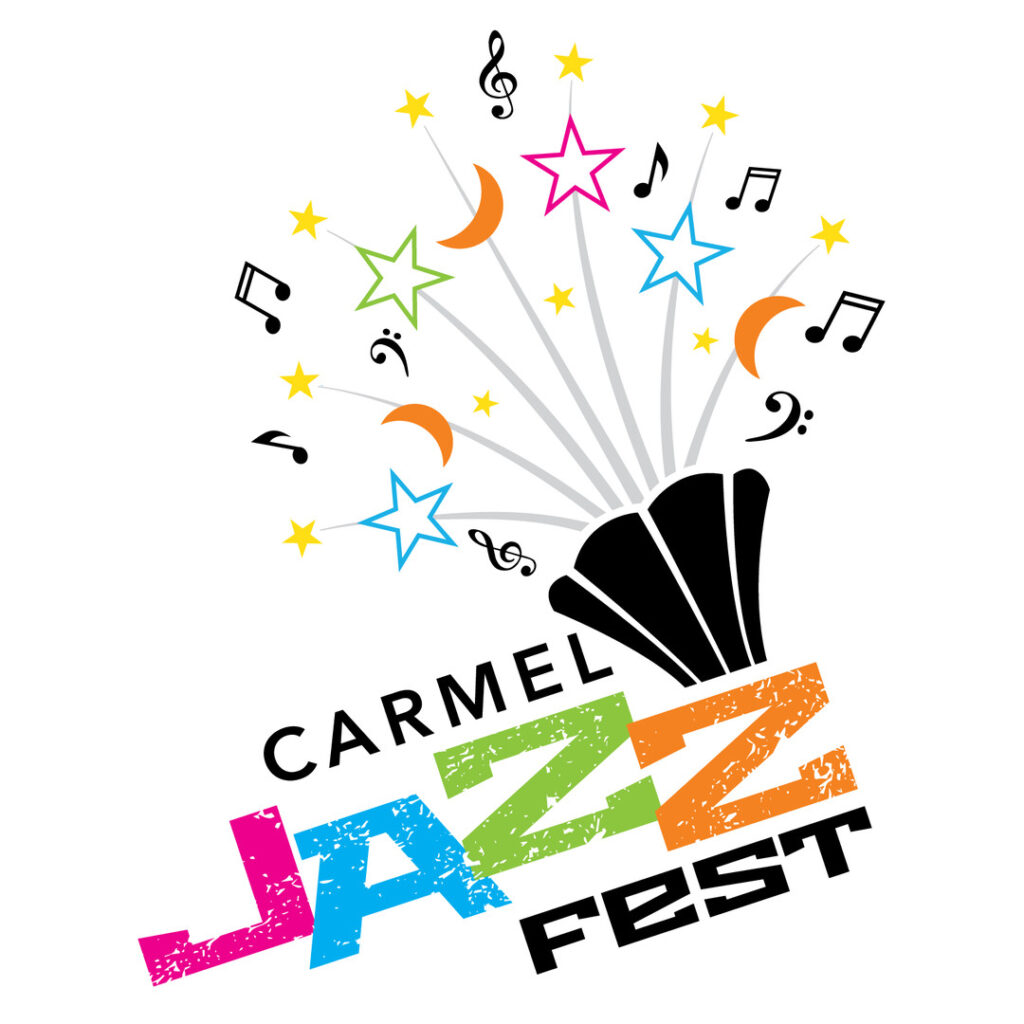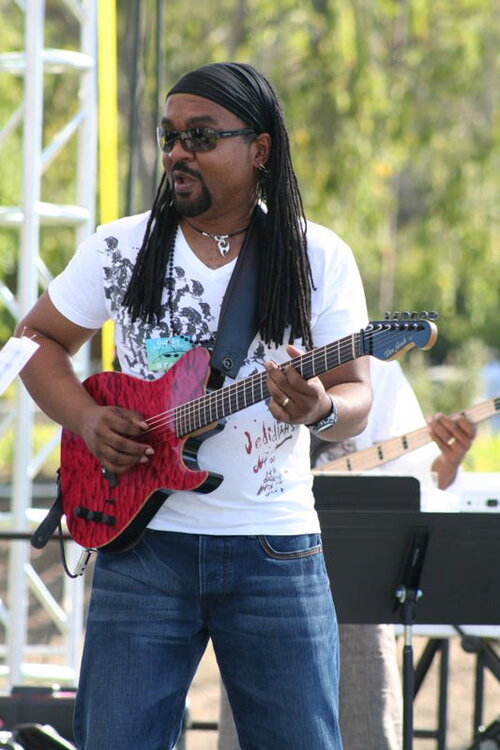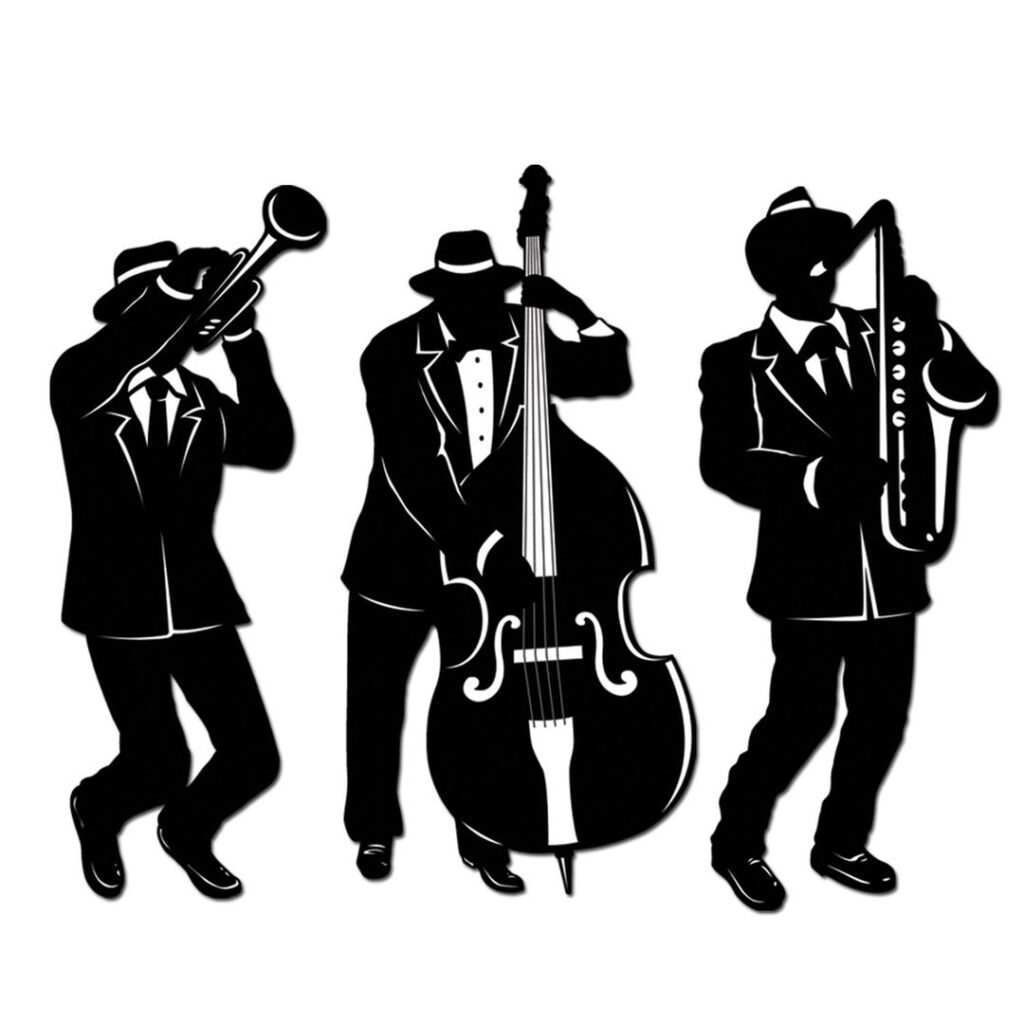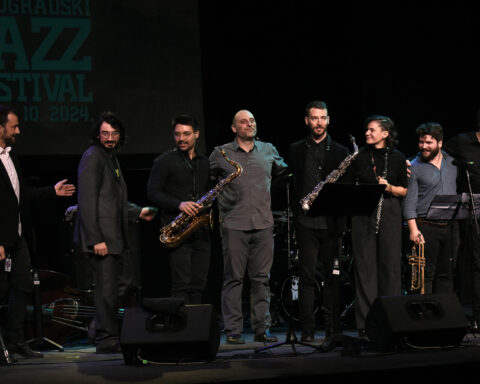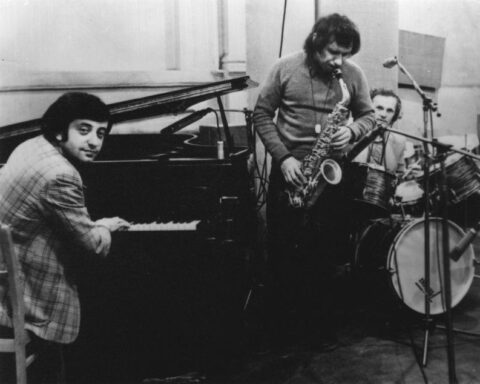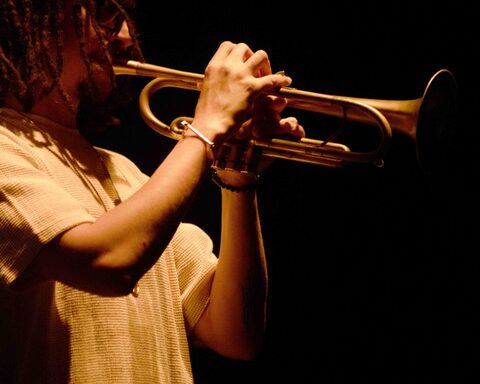The Carmel Jazz Fest debuts August 11 and 12, 2023, with more than 30 performances on eight stages on the campus of the Center for Performing Arts in the suburb immediately north of Indianapolis, Indiana.
Vocalist and event founder and CEO Blair Clark says the keys to its expected success include state-of-the-art venues, cooperation with the Mayor’s office, lanyards and balloons. Here’s my Q&A with Clark:
LLF: There are quite a few jazz fests in the Midwest, but it’s amazing to be at the birth of one, like the birth of a star. How long has this fest been in the planning stage and what was its origin?
BC: I had been in touch with Carmel Mayor Jim Brainard a couple of times. His father was a music teacher and he’s into the arts, plays piano and French horn. His support was one of the catalysts.
We had kicked it around and talked about it when the decision was made to go forward. We’ve been a year in the works as far as putting the details together.
It’s a great opportunity, because we’re not scattered all over, but centralized. It’s an indoor and outdoor, rain or shine event. Carmel has state-of-the-art facilities with Feinstein’s at the Hotel Carmichael, and also the Palladium, which is just steps away. We also have the 500-seat Tarkington theater, the Carmel Gazebo, Carter Green, the black box Studio Theater, Midtown Plaza, Jazz on the Monon and pop-up shows.
LLF: State-of-the-art systems are critical. Can you talk about the Palladium and Hotel Carmichael venues?
BC: Sure. The Palladium seats 1500. There’s only a couple of Palladiums in the country. These are phenomenal facilities, built exclusively for events to be indoors. Tony Bennett, who recently passed away — and my heart goes out to his family, he was a phenomenal performer — I got a chance to see him

when he played the Palladium. The Temptations are among the phenomenal artists that have played there. And this year, through our partnership with the Center for the Performing Arts, we’ll have Spyro Gyra and Evelyn “Champagne” King at the Palladium for the Carmel Jazz Fest.
Feinstein’s is a cabaret, named for the singer, pianist and song preservationist Michael Feinstein, founder and curator of The Great American Songbook Foundation. He filmed the televised, Emmy-nominated special Michael Feinstein – The Sinatra Legacy there n 2011. He’s very involved with the Palladium as well as with Hotel Carmichael [named for Indiana-native songwriter Hoagy Carmichael].
So we have the concert-type indoor feel, and then the cabaret. Eat some dinner, sit down, be entertained. The Spyro Gyra/Evelyn “Champagne” King show is a ticketed add-on, as is Denise Thimes at Feinstein’s, but starting at 5 pm Friday and 11 am Saturday we’ve got artists from New York, California, Nashville and Michigan as well as some of our great local talents, all for a $29 daily fest pass.
LLF: Beautiful venues are a strong asset. How are you able to have that mix local talent and household names?
BC: I moved here from Santa Barbara. I’d spent time in Los Angeles, where I’d worked with Ron Tyson of The Temptations and Evelyn “Champagne” King, among others. My producer Preston Glass worked with Al Jarreau — in fact, wrote a song with him that we’re doing on my next project, In A Perfect World. I got a chance to work with a lot of these people and I wanted to bring that California flavor here.
And then pianist Monika Herzig, who teaches at Indiana University-Bloomington and is doing the Both Sides of Joni project, is bringing in Alexis Cole from New York.
And guitarist Freddie Fox is out of L.A. He’s on one of my albums.
LLF: So you were able to draw upon your own background. When did your own career begin? Blair, how long have you been doing the thing?
BC: Oh, my I started when I was 16. The first band I played with was in Lansing, Michigan. I was in a group with the late Henry Butler, a blind pianist who was very popular in New Orleans and also toured and recorded.
I joined the Army, then got out of it and traveled all over the country with different bands. I sang and went to Europe in 1972 and ’73. Since then I’ve just traveled around, singing with different people. I’ve collaborated with people like Preston Glass and Narada Michael Walden, who wrote for such great artists as Aretha Franklin. That’s where my roots are. So it was very easy for me to share that passion with the Mayor and get this ball rolling.
LLF: What are you hoping will happen as a result of the Carmel Jazz Fest? Obviously, you want everybody to have a good time and come out, but are you hoping that it will contribute and spark creativity?
BC: We want to encourage young people to learn about the arts, learn about jazz and blues and r&b and where the music that’s popular now came from.
When I was a kid my family didn’t have a lot of money, so we couldn’t afford lessons and instruments and things like that. One of my hopes for Carmel Jazz Fest is to be able to put instruments and training in the hands of less fortunate students.
Here in Carmel, in Hamilton County, where I live as an instructor and a musician, many children are blessed. They have a lot of advantages. Many get lessons, have instruments. But there are people in surrounding areas that don’t have that opportunity. Our next Cole Porter and our next Wes Montgomery could very well be someone who originally didn’t have the opportunity to have instruments or lessons. Let’s give them that opportunity so that everybody can share in making music, creating and being artists.
LLF: Is there a program in development now to get musical instruments into the hands of students in need?
BC: I’ve been in the music business for a long time, but I’ve never put a jazz festival together. What we’re trying to do is chew gum and walk at the same time. We’re reaching out to music stores, we’re going to be reaching out to pawn shops.
The goal is to find different avenues of gathering instruments and finding little ways of not only getting those instruments in the hands of students, but also getting a hold of musicians and teachers who want to help educate these students. We’ll pay those that we can. Some will donate their time. Those are things that definitely are going to happen, need to happen, are happening. But I can tell you, those things are on a slower train than the Jazz Fest. First we’ve got to get that going, kind of move that energy and that attention, so that then we can start pulling other things together.
LLF: Please walk me through your timeline.
BC: Our downbeat, as we say in the music business, is going to be August 11. Go to Carmeljazzfest.org, sign up to be a volunteer, can sign up to be a sponsor, sign up to get your tickets. The goal is for everybody to get involved. Become a sponsor, become a volunteer, definitely become a fan and enjoy some of these great entertainers.
LLF: You’re blessed with decades of experience in the industry. You’ve networked with prominent people. You have beautiful venues. What are some things that have surprised you organizing this Fest?
BC: When you’re doing something new, there are a lot of surprises. We wanted to make it family friendly, so we thought we got to have something for the kids to do. We’re bringing in a kids’ zone, which is going to have Mr. Daniel, a performer strictly for kids. We have two face painters, two balloon sculptors. When parents are watching bands perform, there will be something for the kids to do, too.
We have a beer tent and a beer garden so people can have some spirits if they want, making sure we bring in some food vendors.
There’s so many little hidden things that I’m just becoming aware of. We have attorney people and financial people to work on accounting. You have to have volunteers. You have to have food. Directions and places for people to go and tickets. So when people go online to buy tickets, it’ll go through our box office at the Palladium. Once they buy the ticket, go and get their ticket. When they come to our event, we’ll redeem their ticket for a lanyard, they’ll walk around, see where everything is.
LLF: What is your advice if someone wants to do a jazz fest in their town?
BC: My advice is go for it! The thing I love about music is it’s a living, breathing organism. Everybody loves to sing in the car and sing in the shower and listen to music and pay money to go see concerts and see musicians perform. Music is our heartbeat and our pulse. When we’re happy, when we’re sad. It’s a mood swinger, it’s a mood healer.
Of course, the first year is always not only a learning experience, but the hardest part of the effort. After this, it’s going to be easier. But I encourage anybody that wants to introduce music to their community to do so.

